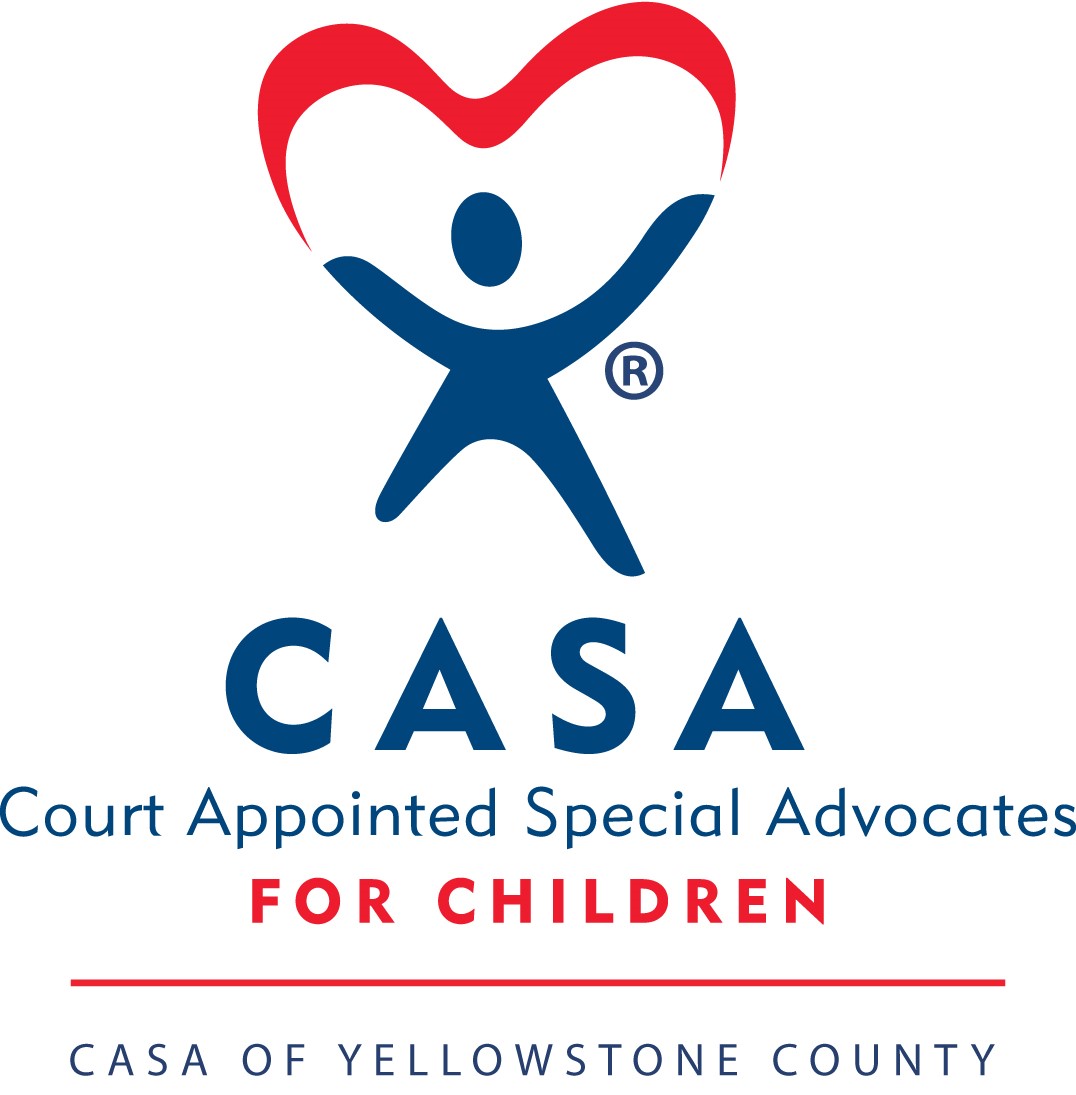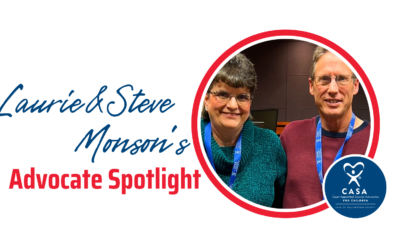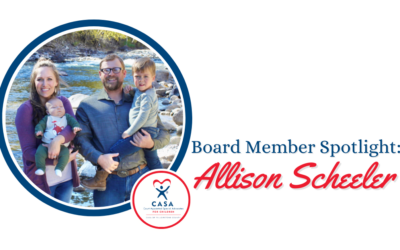[Author’s Note: This blog post was adapted from a paper submitted for a course on juvenile justice at the Alexander Blewett III School of Law at the University of Montana.]
The roots of the CASA model date back to 1974 with the passage of the Child Abuse Prevention and Treatment Act, in which Congress mandated that children in dependency proceedings—i.e., those initiated in response to the abuse or neglect of a child—must be provided with an attorney or trained volunteer to serve as the child’s guardian ad litem (GAL).[1] In this dependency context, that role would include investigating aspects of the child’s case and representing the child’s best interests in court.[2] The first CASA program grew out of an experiment in the Seattle courtroom of Washington Superior Court Judge David Soukup in 1977.[3]
Today, the CASA model is stewarded by the work of more than 900 local programs throughout the United States.[4] Most states’ programs operate as nonprofit organizations, while a minority of jurisdictions administer state-run CASA programs.[5] Although local programs generally require paid staff to supervise the volunteer Court Appointed Special Advocates, some programs—including CASA of Yellowstone County—have implemented what is known as the “Peer Coordinator Model,” whereby experienced volunteers receive additional training to coach and mentor other Advocates, while continuing to serve in a volunteer capacity.[6] With the staff then providing direct supervision primarily to the volunteer peer coordinators, and the peer coordinators shouldering much of the time and effort required to support the Advocates, this model allows local programs “to serve exponentially more children without having to equally increase staff and budget.”[7]
In Montana, 15 local CASA programs serve 42 of the state’s 56 counties; one of these programs exclusively serves children in cases under the jurisdiction of the Confederated Salish and Kootenai Tribal Court.[8] The Montana Supreme Court has recognized that the role of a Court Appointed Special Advocate is “to act as an agent of the court, in the best interests of the child,” and to act as a “factual investigator[] that effectively serve[s] as the eyes and ears of the court.”[9]
The Montana Legislature has granted courts in each judicial district with the authority to “appoint a court-appointed special advocate . . . for any child alleged to be abused or neglected.”[10] Before receiving an appointment to a child’s case, each Advocate must receive “appropriate training that is specifically related to serving as a child’s court-appointed representative.”[11] The Legislature has defined the CASA’s role to include (1) conducting investigations to discover any facts related to the alleged abuse or neglect; (2) interviewing and observing the child; (3) accessing “court, medical, psychological, law enforcement, social services, and school records” related to the child, the child’s siblings, the child’s parents, and any other caregivers; (4) writing reports to the court; and (5) attending all court proceedings and making recommendations to the court.[12]
Court Appointed Special Advocates serve in a unique capacity that allows them to stay “focused on the well-being of the children without having to serve the interests of the parents, the county child protective services unit, or the state.”[13]
Some would argue that a number of the benefits of the CASA model, and its proven effectiveness in dependency cases, would translate to new roles outside the dependency context. As stated by one author regarding the CASA’s utility in dependency cases:
[T]he involvement of a CASA volunteer in a case, compared to advocacy by an attorney alone, appears to improve representation of the child. CASA volunteers are much more likely to have face-to-face contact with the children and their care providers. . . . The continuity of representation and documentation may be important when one considers the high turnover of county social workers and the rotation of private attorneys through the dependency court.[14]
The National CASA/GAL Association for Children has cited research indicating that young people who receive a Court Appointed Special Advocate self-report “significantly higher levels of hope,” which in turn leads to “academic success, overall wellbeing, increases in self-control, positive social relationships and optimism.”[15] More specifically, when an Advocate is appointed to serve a child, that child “tend[s] to perform better academically and behaviorally in school[,] as measured by whether or not they passed all of their courses, whether or not they were expelled, and their conduct performance.”[16]
The CASA model and its programs already enjoy widespread support among political leaders and the judiciary.[17] For example, in 2017, the Montana Legislature not only enacted legislation codifying the role of CASAs in dependency proceedings,[18] but also created “a court-appointed special advocate account in the state special revenue fund . . . [to be] used solely for the purpose of providing funding for court-appointed special advocates.”[19]
In addition, the National CASA Association has cited research showing that judges report high esteem for the effectiveness of the CASAs who serve in their courtrooms, especially regarding the impact CASAs have in promoting the child’s long-term wellbeing and facilitating services for children and their families.[20]
Across the nation, many CASA programs are looking to other areas of the legal system that could be supported by the CASA model. One organization—CASA DC—recently piloted a program that provides Court Appointed Special Advocates to juveniles involved in delinquency cases in Washington, DC.[21] Known as BRIDGES, this program’s mission is “to provide advocates to all court-involved-youth who have past or present involvement in the juvenile legal system.”[22] CASA DC’s BRIDGES program demonstrates that CASA organizations can explore using their volunteer resources for serving juveniles involved outside the dependency context by surveying the needs of their communities and opening conversations with their local courts and other stakeholders.[23]
Are programs like CASA DC—providing Court Appointed Special Advocates to children in the foster care system as well as young people caught up in the criminal delinquency system—the future of the CASA model? Only time will tell. In the meantime, we should all be grateful for the tremendous work our Advocates do for abused and neglected children right here in Yellowstone County.
Ben McKee is a former Court Appointed Special Advocate with CASA of Yellowstone County.![]()
Notes
[1] Davin Youngclarke, Kathleen Dyer Ramos & Lorraine Granger-Merkle, Trends & Developments in the Juvenile Court: A Systematic Review of the Impact of Court Appointed Special Advocates, 5 J. Ctr. for Fam. Child. & Cts. 109–10 (2004).
[2] Id.
[3] Id. at 110.
[4] State and Local Programs, Nat’l CASA/GAL Ass’n for Children, https://perma.cc/5SY4-QKW4 (last visited Apr. 23, 2022).
[5] State of the States: How State CASA Organizations Compare (Nat’l CASA/GAL Ass’n for Children 2008), available at https://perma.cc/2636-N2TF.
[6] The Peer Coordinator Model: A Guide to Transition *2 (CASA of Lane Cty., Or. 2012), available at https://perma.cc/A4C7-HZEZ.
[7] Id. at *1; see also Ashley Milsop, An Engine For Growth: The Peer Coordinator Model at Work, CASA of Yellowstone Cty., https://perma.cc/96W7-QGTS (last visited Apr. 24, 2022).
[8] Find Your Local CASA Program, Mont. CASA/GAL Ass’n, https://perma.cc/KK6V-F7CA (last visited Apr. 21, 2022); see also Lailani Upham, CASA program helps children navigate legal system, Char-Koosta News, Apr. 20, 2017, available at https://perma.cc/4RUK-CD62.
[9] In re J.D., 437 P.3d 131, 140 (Mont. 2019).
[10] Mont. Code Ann. § 41-3-112(1) (2021).
[11] Id. § 41-3-112(2).
[12] Id. § 41-3-112(3)(a)–(e).
[13] Youngclarke, supra note 1, at 110.
[14] Id. at 121.
[15] Research & Effectiveness, Nat’l CASA/GAL Ass’n for Children, https://perma.cc/J2NB-JSHK (last visited Apr. 24, 2022) (citing Jessica Stanley & Chan M. Hellman, Nurturing Hope Among Children Experiencing Abuse & Neglect: Examining the Effects of CASA Volunteers (2019)).
[16] Id. (citing H. Waxman et al., The Long-Term Effects of the Houston Child Advocates, Inc., Program on Children & Family Outcomes, 88 Child Welfare 23–46 (2009)).
[17] See, e.g., Young Introduces Resolution Designating May 18th as the First-Ever CASA/GAL Volunteers’ Day, Todd Young, U.S. Senator for Ind., https://perma.cc/L5LZ-N2FT (last visited Apr. 22, 2022) (discussing bipartisan congressional resolution designating CASA/GAL Volunteers’ Day); Dillon Tabish, Future of Underfunded CASA of Montana State Office Uncertain, Flathead Beacon, Sept. 27, 2017, available at https://perma.cc/7KJR-KKPP (discussing Montana CASA director’s role on governor-appointed commission investigating state social services and making recommendations for improvement); Judicial Survey Results, Nat’l CASA/GAL Ass’n for Children, https://perma.cc/HP43-VACM (last visited Apr. 22, 2022).
[18] See Mont. Code Ann. § 41-3-112 (2021).
[19] See Mont. Code Ann. § 3-1-707 (2021).
[20] Research & Effectiveness, supra note 15 (citing D. Weiner et al., The Court Appointed Special Advocate (CASA) Program: Judicial Perspectives Survey & the Path to Evidence (2020)).
[21] See BRIDGES Program, CASA of Children of DC, https://perma.cc/A3LX-ZSBP (last visited Apr. 22, 2022).
[22] BRIDGES Program Flyer, CASA of Children of DC, https://perma.cc/9YUJ-2XVJ (last visited Apr. 24, 2022) (use of all capitals omitted).
[23] See BRIDGES Program, supra note 21 (“CASA DC began research in 2018 regarding the needs of youth involved in the juvenile justice system in Washington, DC. CASA DC focused on providing specialized training for advocates working with youth and advocating for the particular issues that they may be facing.”).






